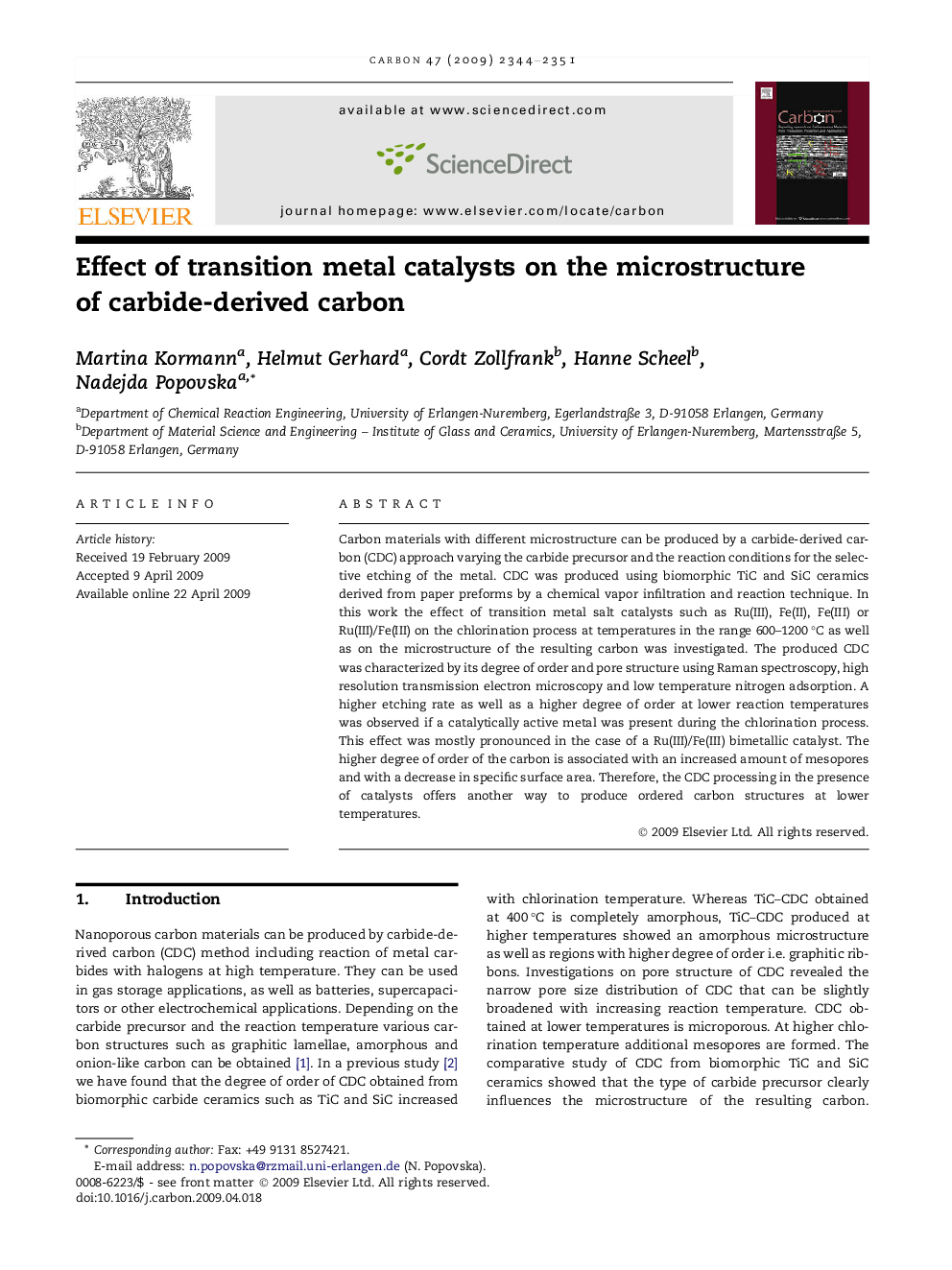| کد مقاله | کد نشریه | سال انتشار | مقاله انگلیسی | نسخه تمام متن |
|---|---|---|---|---|
| 1416405 | 985949 | 2009 | 8 صفحه PDF | دانلود رایگان |

Carbon materials with different microstructure can be produced by a carbide-derived carbon (CDC) approach varying the carbide precursor and the reaction conditions for the selective etching of the metal. CDC was produced using biomorphic TiC and SiC ceramics derived from paper preforms by a chemical vapor infiltration and reaction technique. In this work the effect of transition metal salt catalysts such as Ru(III), Fe(II), Fe(III) or Ru(III)/Fe(III) on the chlorination process at temperatures in the range 600–1200 °C as well as on the microstructure of the resulting carbon was investigated. The produced CDC was characterized by its degree of order and pore structure using Raman spectroscopy, high resolution transmission electron microscopy and low temperature nitrogen adsorption. A higher etching rate as well as a higher degree of order at lower reaction temperatures was observed if a catalytically active metal was present during the chlorination process. This effect was mostly pronounced in the case of a Ru(III)/Fe(III) bimetallic catalyst. The higher degree of order of the carbon is associated with an increased amount of mesopores and with a decrease in specific surface area. Therefore, the CDC processing in the presence of catalysts offers another way to produce ordered carbon structures at lower temperatures.
Journal: Carbon - Volume 47, Issue 10, August 2009, Pages 2344–2351